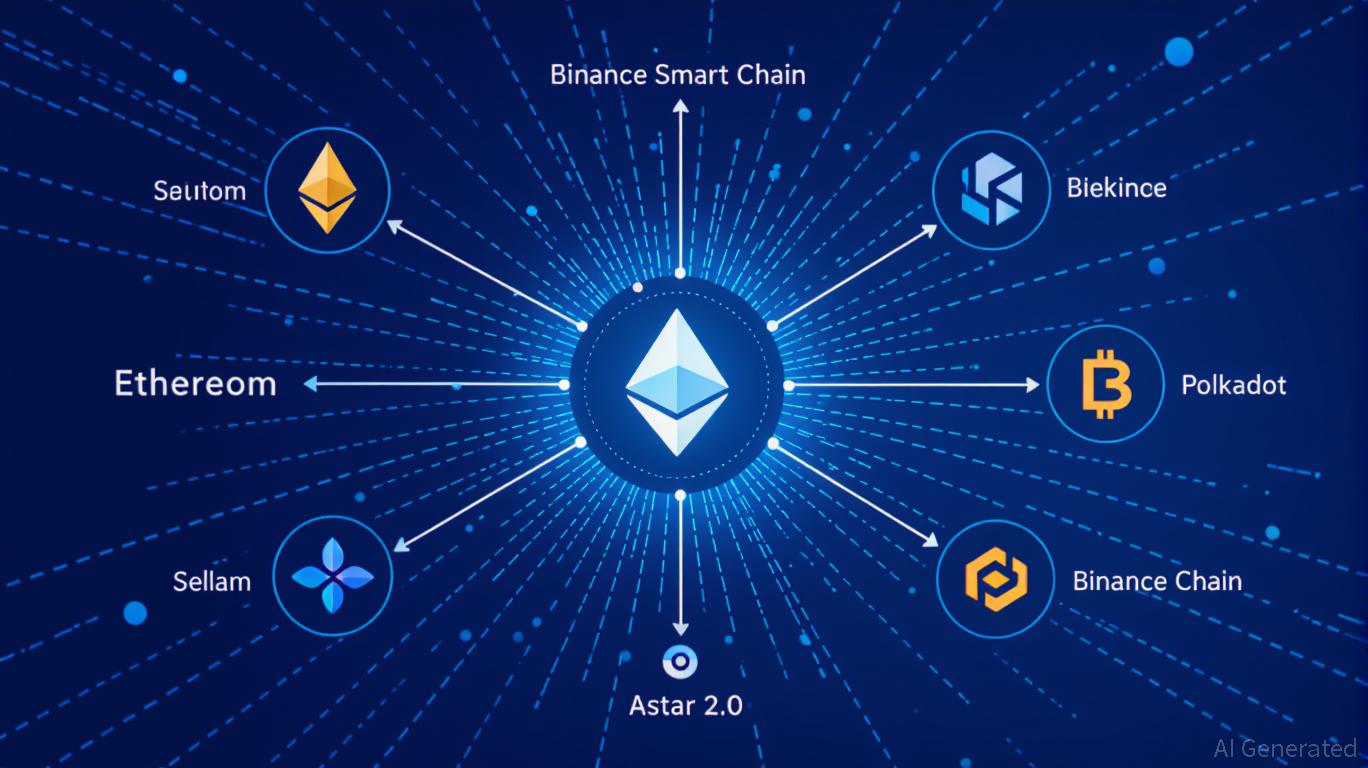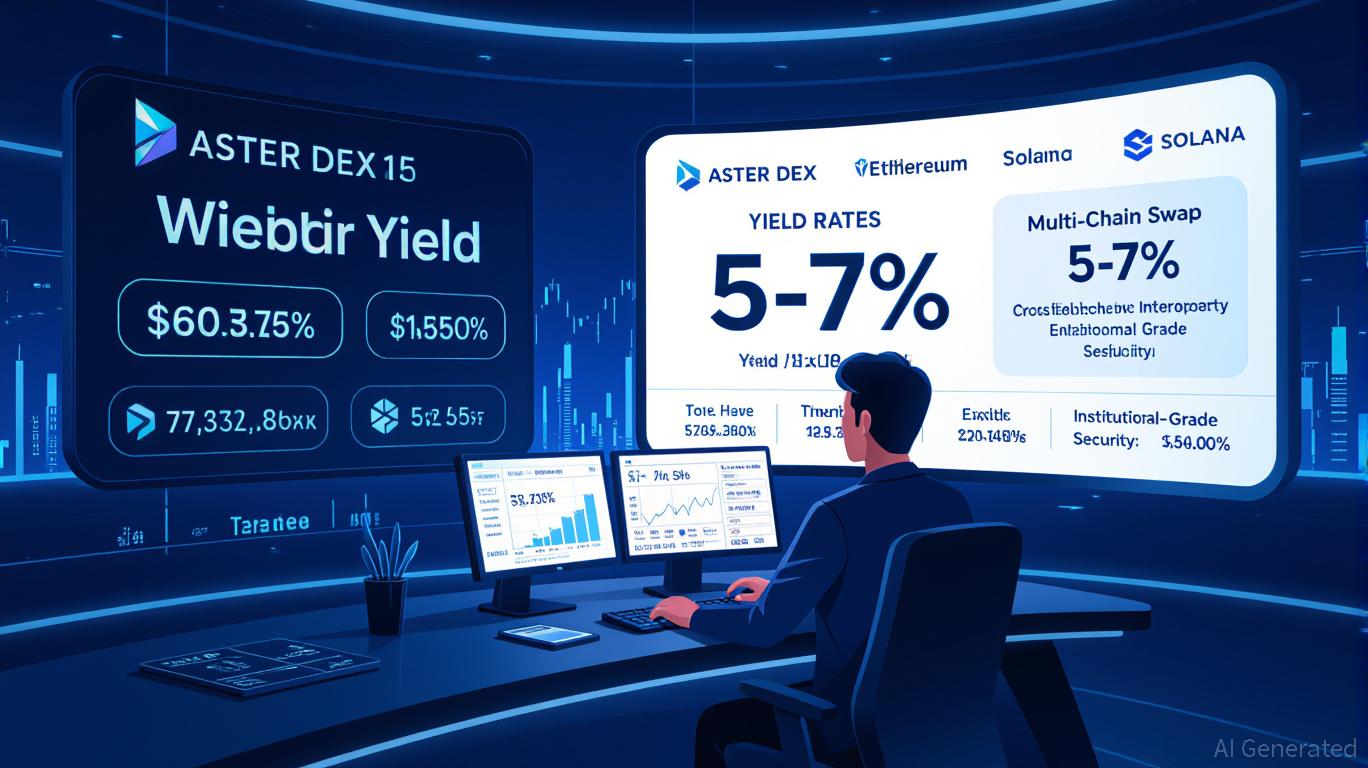Astar 2.0: Leading a New Generation of DeFi and Cross-Chain Advancements
- Astar 2.0 introduces a zkEVM mainnet and cross-chain interoperability, slashing gas fees and enabling 150,000 TPS with 2025 scalability goals. - Strategic partnerships with Mazda, Japan Airlines, and Sony demonstrate blockchain's real-world applications in logistics, loyalty programs, and digital asset tokenization. - Q3 2025 data shows $2.38M DeFi TVL growth and 20% active wallet increase, alongside a $3.16M institutional ASTR token acquisition. - The platform aims to solidify its role as a foundational
Technical Breakthroughs: zkEVM and Cross-Chain Scalability
The launch of a zero-knowledge Ethereum Virtual Machine (zkEVM) mainnet by Astar 2.0 represents a major evolution in DeFi infrastructure. Utilizing zero-knowledge proofs and rollup technology, the platform has significantly reduced gas costs and increased transaction throughput, making Ethereum-based services more accessible to both individual and institutional users
Astar’s capabilities in cross-chain operations further enhance its disruptive edge. The platform’s Astar Link framework incorporates protocols such as
Real-World Applications: From Automotive to Aviation
Astar 2.0’s collaborations with Japanese corporations showcase its ability to deliver real-world blockchain solutions. Mazda, for instance, is utilizing Astar’s hybrid blockchain to streamline supply chain management, using blockchain to monitor parts and minimize inefficiencies
Sony’s alliance with Astar further demonstrates this direction. By issuing digital assets on Astar’s network, Sony is opening up new monetization channels for creators and fans, aligning with the rising interest in NFT-driven platforms
Investor Implications: A Platform Poised for Growth
Astar’s technological progress and strategic moves are already yielding tangible results. In the third quarter of 2025, the platform’s DeFi total value locked (TVL) hit $2.38 million, outperforming the general downturn in the DeFi market

Challenges and the Road Ahead
Although Astar has gained significant traction, it still faces competition from ZK-rollup solutions and established Layer 2 networks. Nevertheless, its emphasis on security, regulatory compliance, and enterprise-level scalability—along with partnerships in sectors like logistics, aviation, and entertainment—gives it a distinctive advantage. Upcoming developments, such as the implementation of Coretime on Polkadot and Async Backing, are set to further decrease latency and enhance resource management,
Conclusion
Astar 2.0’s targeted upgrades and integration into real-world industries are transforming the DeFi and cross-chain environment. By solving issues related to scalability, interoperability, and institutional participation, the platform is not only overcoming technical barriers but also demonstrating blockchain’s practical value in traditional sectors. For investors, Astar stands out as a promising opportunity in a market with significant growth potential.
Disclaimer: The content of this article solely reflects the author's opinion and does not represent the platform in any capacity. This article is not intended to serve as a reference for making investment decisions.
You may also like
Bitcoin Updates Today: Veteran Bitcoin Holders Selling Raises Questions: Is the Market Unstable or Undergoing a Tactical Change?
- Bitcoin OG holders are accelerating sales of decade-old BTC stashes, with $1B+ moved from pre-2018 wallets in 2025. - Analysts debate motives: Erik Voorhees sees long-term adoption focus, while Willy Woo cites quantum risk mitigation and SegWit address shifts. - Price volatility intensifies as BTC struggles to reclaim $105k-$106k support, with $722M realized losses and ETF buying ($530M) failing to offset selling pressure. - Historical patterns suggest potential 15-20% corrections, with on-chain expert D

DeFi’s Latest Gateway: How DASH’s Calculated Strategy Demonstrates Trustworthiness to Institutions
- Aster DEX's DASH token, with institutional backing, drives DeFi adoption through hybrid models. - DASH's yield-collateral model offers 5-7% returns, bridging traditional and decentralized finance. - Partnerships with Binance and $17.35B TVL validate Aster DEX's institutional credibility. - Price volatility and regulatory risks persist, but hybrid compliance tools mitigate challenges. - DASH's strategic move highlights DeFi's potential as a bridge to next-gen financial infrastructure.

Vitalik Buterin's Perspective on ZK: Driving Institutional Embrace in DeFi and Privacy-Focused Assets
- Vitalik Buterin's ZK advocacy reshapes blockchain infrastructure for DeFi and privacy-centric assets. - GKR protocol breakthroughs enable 43,000 TPS with Deutsche Bank , Sony adopting ZK-based hybrid compliance models. - Shielded CSV protocol combines ZK-SNARKs with regulatory compliance to address post-Tornado Cash scrutiny. - 2025 regulatory shifts and 70% gas fee reductions position ZK networks as strategic infrastructure for institutional crypto adoption.

AI-Generated Algorithms and Human Interaction: The Internet's Trustworthiness Dilemma
- The "Dead Internet Theory" resurfaces as AI-generated content dominates online platforms, blurring human engagement metrics. - Pixalate's Q3 2025 data reveals 37% non-human traffic in Brazilian mobile app ads, highlighting ad viewability crises. - C3.ai's 19% revenue drop and $117M loss underscore AI sector risks from high costs and competitive pressures. - Advertisers face unreliable metrics as algorithmic noise grows, prompting calls for stricter regulations and advanced analytics.
